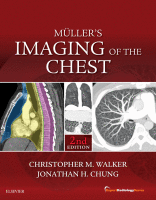Physical Address
304 North Cardinal St.
Dorchester Center, MA 02124

Etiology, Prevalence, and Epidemiology Pneumonia and influenza represent the eighth leading cause of mortality in the United States, with an estimated 1.3 million hospital admissions yearly attributable to pneumonia in patients older than 65 years. Although pneumonia affects all ages,…

Congenital malformations of the pulmonary vessels include absence or interruption, abnormal sizes, origins, or courses, and abnormal connections of the pulmonary arteries or veins. These abnormalities commonly accompany other congenital pulmonary or cardiac disorders but can occur in isolation. Although…

Congenital lung disease remains a confusing topic owing to ever-changing histopathologic understanding of the various entities and frequent updates to antiquated clinical and pathologic classification schemes. Past classifications have been based on thoracic anatomic structures, dividing lesions into congenital malformations…

Diseases that cause a decrease in lung density result in increased radiolucency (hyperlucency) on chest radiography and decreased attenuation on computed tomography (CT). Decreased lung density may result from obstructive overinflation without lung destruction (e.g., asthma, constrictive bronchiolitis), overinflation with…

Many diseases involve predominantly or exclusively the pulmonary interstitium. The differential diagnosis of the various entities on the chest radiograph and computed tomography (CT) is based on the pattern and distribution of abnormalities and on the presence of associated findings,…

Solitary Lung Nodule or Mass A pulmonary nodule is defined as any pulmonary lesion that is well-defined, discrete, approximately circular, and 3 cm or less in diameter. The term mass is used for lesions greater than 3 cm in diameter. The differential…

Atelectasis is defined as less than normal inflation of all or part of the lung with a corresponding diminution in lung volume. Although the term collapse is often used synonymously with atelectasis, it should be reserved for complete atelectasis. Mechanisms…

Airspace consolidation is defined as replacement of gas within the airspaces by fluid, protein, cells, or other material. Consolidation is characterized on radiographs and computed tomography (CT) by the presence of one or more fairly homogeneous opacities associated with obscuration…

Radiography Technique Projections The standard radiographic views for evaluation of the chest are the posteroanterior (PA) and lateral projections with the patient standing; such projections provide the essential requirement for proper three-dimensional (3D) assessment ( Fig. 1.1 ). In patients…